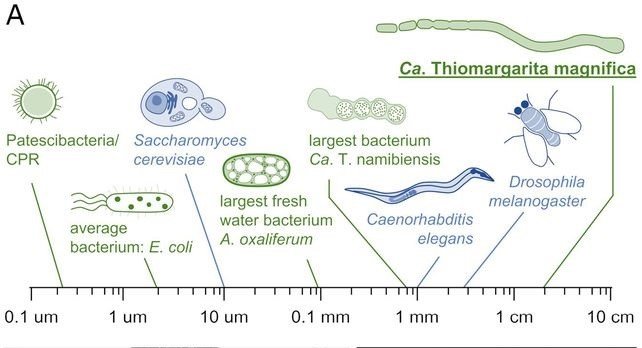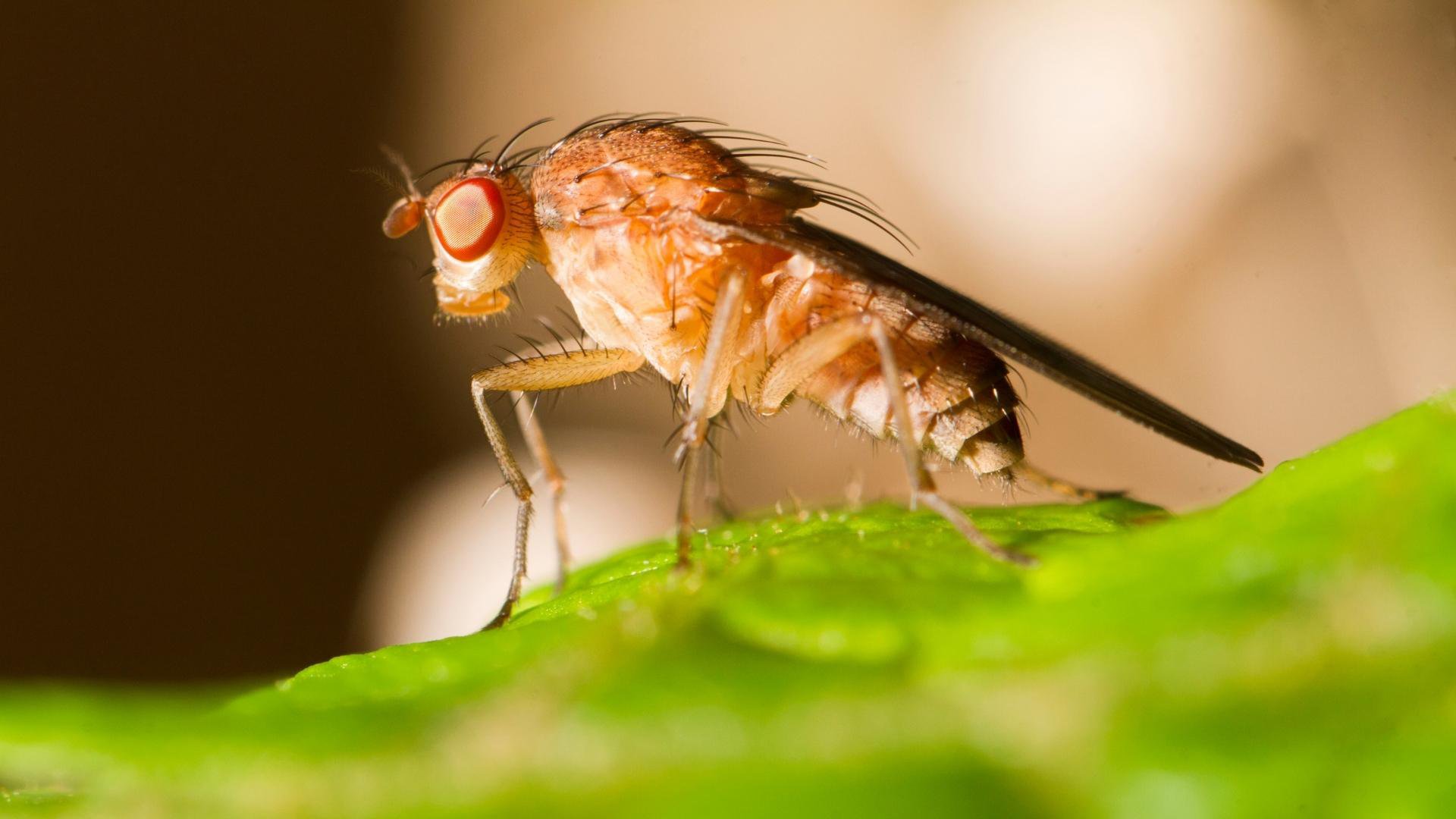Bacteria are invisibly small. Most species are about 2 microns (0.002 millimeters) long. An intersection of a human hair is approximately 25 times as big. There are also species that can grow up to 750 microns (0.75 millimeters) long. Unsurprisingly, these are called giant bacteria. With our eyes we can see objects up to 0.1 millimeters. The giant bacteria are thus visible to the naked eye.
Little giant discovery
It turns out that even giant bacteria are not the largest. In a new study, scientists used different microscopy techniques (fluorescence, x-ray, and electron microscopy) and discovered a new ultra-gigantic bacterial species. This bacterium can grow up to 9000 microns. Almost 1 centimeter! This makes the bacterium even longer than a fruit fly and easily visible to the naked eye. It does not follow the theoretical ideas that are existing for bacteria. They are built very differently than other kinds of bacteria, and have over half a million copies of their genome in their individual cells.

(Volland, J. M., et al., 2022. A centimeter-long bacterium with DNA compartmentalized in membrane-bound organelles. PREPRINT at bioRxiv. https://doi.org/10.1101/2022.02.16.480423)
You can call me Thiomargarita magnifica
For now, the scientists proposed the name Candidatus Thiomargarita magnifica. When this bacterium is acknowledged as a new species we can call it Thiomargarita magnifica. Other species of bacteria from the genus Thiomargarita exist around places where hydrogen sulfide is abundant. Like at the bottom of the ocean or in mud volcanos. Most of these species are lithotroph, which means that they get their energy from inorganic materials, like sulfate.
Sources
https://www.biorxiv.org/content/10.1101/2022.02.16.480423v1.full

